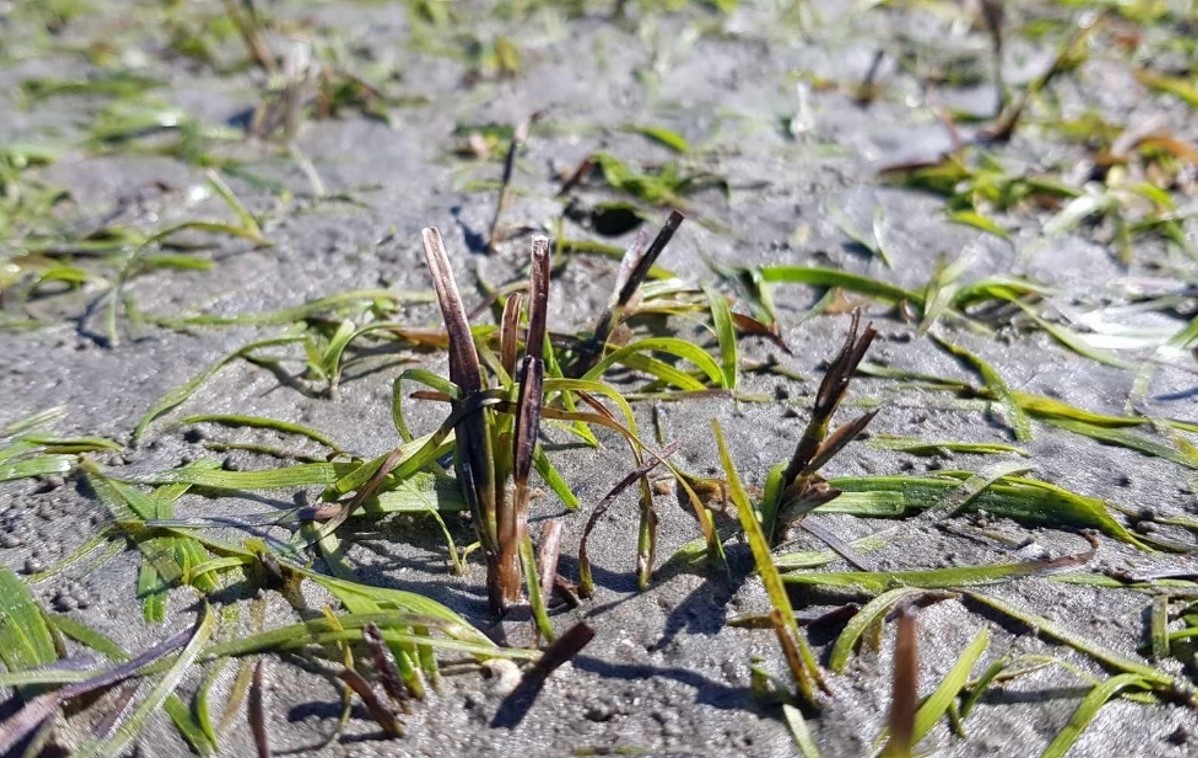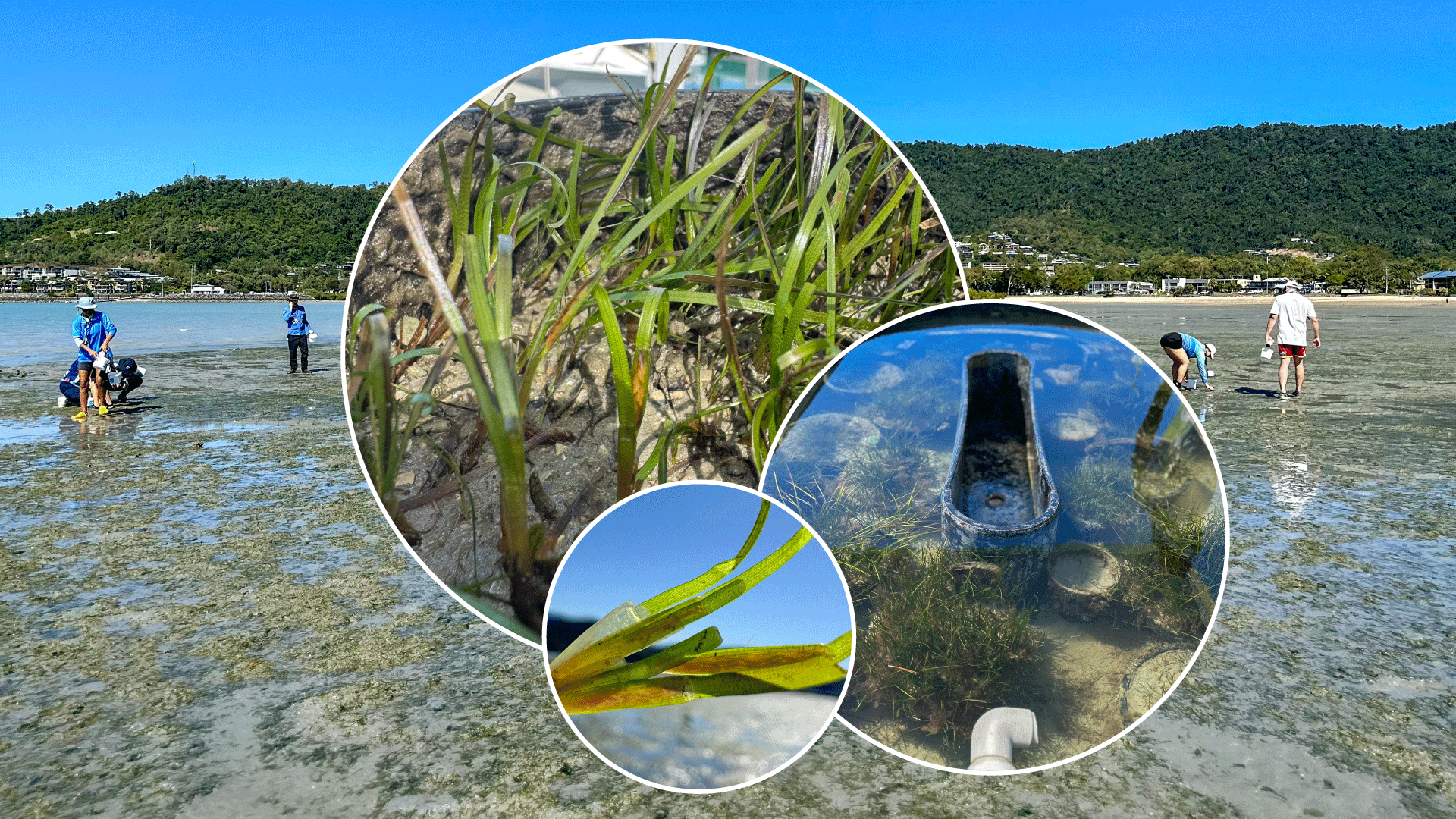While the rest of the Whitsundays are still shaking off the last chill of winter, spring has already sprung in an unexpected place – the seagrass nursery tucked inside Coral Sea Marina in Airlie Beach. Here, rows of sunlit tanks are quietly nurturing the next generation of seagrass meadows, offering a hopeful glimpse into the future of our coastal ecosystems.
Zostera muelleri, or “eelgrass”, has produced the first flowers for the year – and in abundance. Found in shallow waters and intertidal mudflats, this species grows in dense meadows that support marine life with its long, strappy leaves and mesh-like vein pattern. Notably, Zostera muelleri produces a large number of seeds annually, making it a valuable species for local research projects.

Zostera muelleri
The early flowering came as a surprise to Reef Catchments Project Officer Alexandra (Lexi) Williams, who has been maintaining the nursery tanks. “It’s been a cold winter, but the seagrass pots are placed along the sunniest parts of the tank edges,” Lexi said. “That temperature variation might have encouraged them into flowering early – which is really interesting.”
They’re no bigger than your finger and yet these delicate seagrass flowers carry the potential to regrow entire seagrass meadows. Each Zostera shoot can produce up to five flowering spathes, and each of those can yield 10–15 seeds. That might sound modest, but under the right conditions, a single seed can regenerate up to a hectare of seagrass meadow.

Images courtesy of CQ University Australia
Normally, flowering begins around August or September. This unexpected early bloom provides a welcome opportunity to begin collecting viable seeds for use in local restoration research trials. Once collected, the seeds are cultivated in the nursery before being returned to the Pioneer Bay mudflats as part of a research project which looks at the impact of re-seeding damaged or fragmented meadows.
Seagrass is a powerhouse of the marine environment. These meadows provide shelter for an incredible variety of sea life, from crabs and snails to juvenile fish, and are an important food source for turtles and dugongs. They also play a key role in stabilising sediment, improving water quality, and storing carbon. With flowers forming at the Airlie Beach nursery, there’s renewed hope that seed-based methods can be used for restoring these vital habitats, ensuring they continue to support rich biodiversity and the health of our coastal ecosystems for years to come.
